第4章 I(1)
I have selected four topics for this lecture, the first three of which I shall touch but slightly, the last more fully. They are 1. The Royal cure of the King's Evil, or Scrofula.
2. The Weapon Ointment, and its twin absurdity, the Sympathetic Powder.
3. The Tar-water mania of Bishop Berkeley.
4. The History of the Metallic Tractors, or Perkinism.
The first two illustrate the ease with which numerous facts are accumulated to prove the most fanciful and senseless extravagances.
The third exhibits the entire insufficiency of exalted wisdom, immaculate honesty, and vast general acquirements to make a good physician of a great bishop.
The fourth shows us the intimate machinery of an extinct delusion, which flourished only forty years ago; drawn in all its details, as being a rich and comparatively recent illustration of the pretensions, the arguments, the patronage, by means of which windy errors have long been, and will long continue to be, swollen into transient consequence. All display in superfluous abundance the boundless credulity and excitability of mankind upon subjects connected with medicine.
>From the time of Edward the Confessor to Queen Anne, the monarchs of England were in the habit of touching those who were brought to them suffering with the scrofula, for the cure of that distemper. William the Third had good sense enough to discontinue the practice, but Anne resumed it, and, among her other patients, performed the royal operation upon a child, who, in spite of his, disease, grew up at last into Samuel Johnson. After laying his hand upon the sufferers, it was customary for the monarch to hang a gold piece around the neck of each patient. Very strict precautions were adopted to prevent those who thought more of the golden angel hung round the neck by a white ribbon, than of relief of their bodily infirmities, from making too many calls, as they sometimes attempted to do. According to the statement of the advocates and contemporaries of this remedy, none ever failed of receiving benefit unless their little faith and credulity starved their merits. Some are said to have been cured immediately on the very touch, others did not so easily get rid of their swellings, until they were touched a second time. Several cases are related, of persons who had been blind for several weeks, and months, and obliged even to be led to Whitehall, yet recovered their sight immediately upon being touched, so as to walk away without any guide." So widely, at one period, was the belief diffused, that, in the course of twelve years, nearly a hundred thousand persons were touched by Charles the Second. Catholic divines; in disputes upon the orthodoxy of their church, did not deny that the power had descended to protestant princes;--Dr. Harpsfield, in his " Ecclesiastical History of England," admitted it, and in Wiseman's words, "when Bishop Tooker would make use of this Argument to prove the Truth of our Church, Smitheus doth not thereupon go about to deny the Matter of fact; nay, both he and Cope acknowledge it." "I myself," says Wiseman, the best English surgical writer of his day,[Edinburgh Medical and Surgical Journal, vol. iii. p. 103.]
--"I my self have been a frequent Eye-witness of many hundred of Cures performed by his Majesties Touch alone, without any assistance of Chirurgery; and those, many of them such as had tired out the endeavours of able Chirurgeons before they came hither. It were endless to recite what I myself have seen, and what I have received acknowledgments of by Letter, not only from the severall parts of this Nation, but also from Ireland, Scotland, Jersey, Garnsey. It is needless also to remember what Miracles of this nature were performed by the very Bloud of his late Majesty of Blessed memory, after whose decollation by the inhuman Barbarity of the Regicides, the reliques of that were gathered on Chips and in Handkerchieffs by the pious Devotes, who could not but think so great a suffering in so honourable and pious a Cause, would be attended by an extraordinary assistance of God, and some more then ordinary a miracle: nor did their Faith deceive them in this there point, being so many hundred that found the benefit of it." [Severall Chirurgicall Treatises.
London.1676. p. 246.]
Obstinate and incredulous men, as he tells us, accounted for these cures in three ways: by the journey and change of air the patients obtained in coming to London; by the influence of imagination; and the wearing of gold.
To these objections he answers, 1st. That many of those cured were inhabitants of the city. 2d. That the subjects of treatment were frequently infants. 3d. That sometimes silver was given, and sometimes nothing, yet the patients were cured.
A superstition resembling this probably exists at the present time in some ignorant districts of England and this country. A writer in a Medical Journal in the year 1807, speaks of a farmer in Devonshire, who, being a ninth son of a ninth son, is thought endowed with healing powers like those of ancient royalty, and who is accustomed one day in every week to strike for the evil.
I remember that one of my schoolmates told me, when a boy, of a seventh son of a seventh son, somewhere in Essex County, who touched for the scrofula, and who used to hang a silver fourpence halfpenny about the neck of those who came to him, which fourpence halfpenny it was solemnly affirmed became of a remarkably black color after having been some time worn, and that his own brother had been subjected to this extraordinary treatment; but I must add that my schoolmate drew a bow of remarkable length, strength, and toughness for his tender years.
One of the most curious examples of the fallacy of popular belief and the uncertainty of asserted facts in medical experience is to be found in the history of the UNGUENTUM ARMARIUM, or WEAPON OINTMENT.